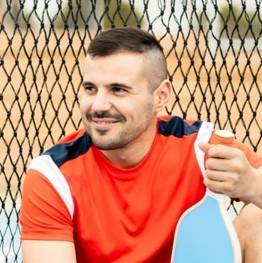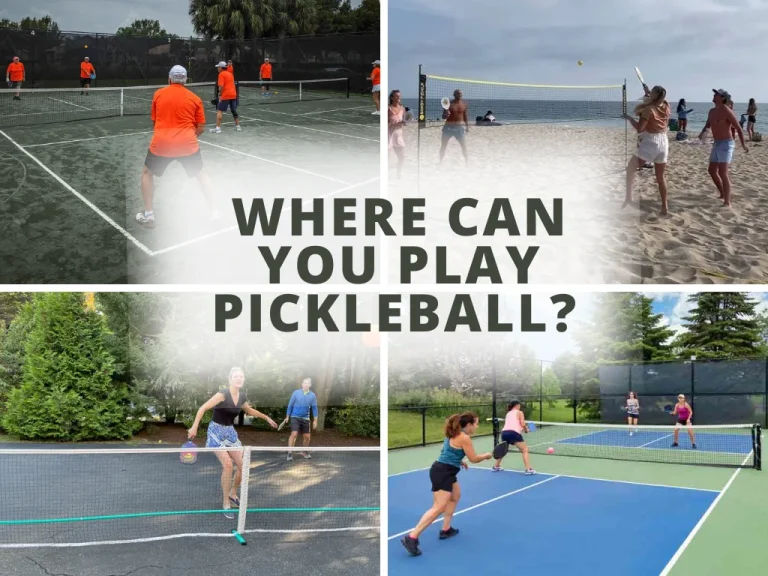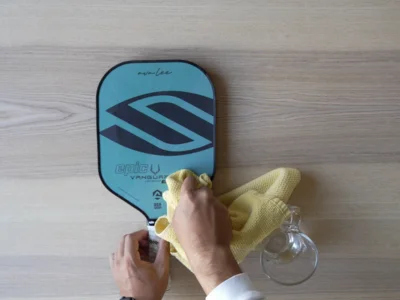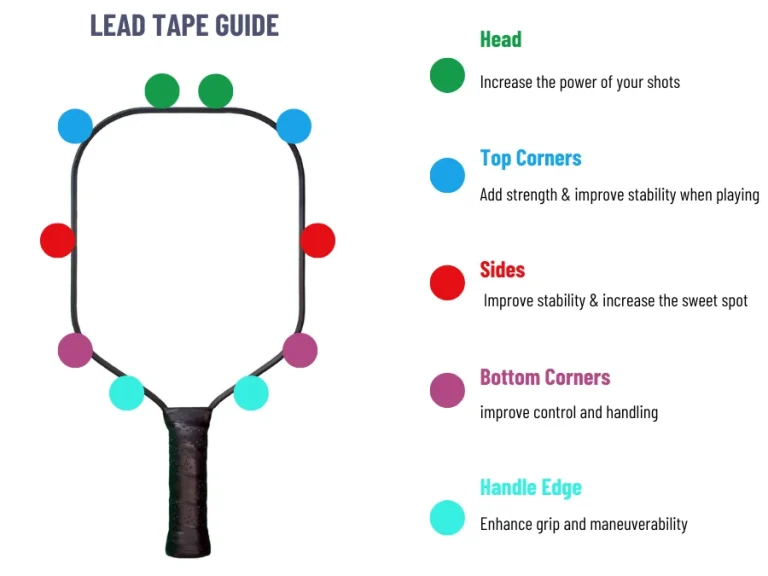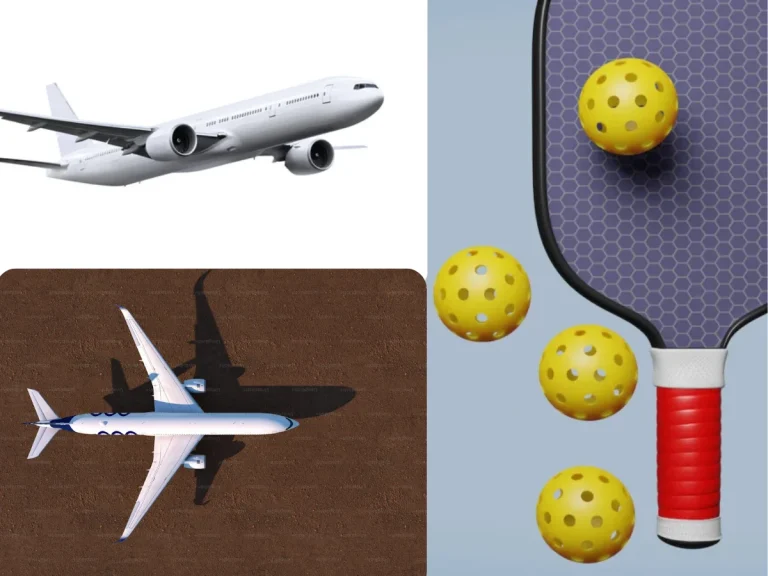Recently, pickleball has become incredibly popular and becoming a favorite pastime for individuals of all ages. As participation grows, so does the demand for high-quality pickleball equipment, including durable paddles.
But how long do pickleball paddles last? This piece explores the factors that impact longevity and offers suggestions for prolonging the life of your pickleball paddle.
Key Takeaways
- Pickleball paddles typically last 1 to 3 years, depending on usage and care.
- Regular inspection and proper maintenance can extend paddle life.
- Signs of wear and tear indicate it’s time to replace your paddle.
- To maintain playing effectiveness and safety, replace the paddle with a new one when there are indications of damage.
To gain these experiences, my teammates and I had a test session every week. We were able to experience various paddle types and measure their performance and wear over time.
Through these strict tests, our team obtained greater knowledge of the average lifespan of pickleball paddles. Furthermore, we observed how different materials and usages impact its longevity.
Average Lifespan of a Casual Pickleball Paddle
The average life of a pickleball paddle falls between 1 to 3 years, depending on several factors. Paddles made from strong materials such as graphite or carbon fiber often last 2 to 3 years with normal use. On the other hand, paddles made from less durable materials may last 1 to 2 years.
Regular players may notice a greater rate of paddle wear and tear. Casual players could find that their equipment lasts longer. Regular inspection and maintenance can help extend the life of your paddle.
An additional query that comes up is, “How long does a pickleball paddle perform best?” The answer is determined by how often you play and how well you maintain it. I spoke with about twenty experienced gamers for advice. Their responses are diverse, but most individuals believe they function best within the first year of purchase, and I agree with this idea.
One recommendation is to schedule an annual paddle replacement. But, if you play every day, you might want to think about switching your pickleball paddle out every six months.
3 Factors Affecting Paddles Lifespan
The most important aspects influencing the longevity of a pickleball paddle are Frequency of Use, Playing Style, and Material. By being aware of these elements, you may get the most out of your paddle and prevent needless replacements. I have synthesized this after researching information and consulting with experienced pickleball players.
1. Paddle Materials
| Surface material | Core material | Average Lifespan(months) | Best for performance (months) |
|---|---|---|---|
| Fiberglass | Polymer | 10 – 14 | 6 – 10 |
| Fiberglass | Nomex | 8 – 12 | 4 – 8 |
| Fiberglass | Aluminum | 12 – 18 | 6 – 12 |
| Graphite | Polymer | 12 – 18 | 6 – 12 |
| Graphite | Nomex | 10 – 14 | 6 – 10 |
| Graphite | Aluminum | 14 – 20 | 8 – 14 |
| Carbon Fiber | Polymer | 14 – 20 | 8 – 14 |
| Carbon Fiber | Nomex | 12 – 16 | 8 – 12 |
| Carbon Fiber | Aluminum | 16 – 24 | 10 -16 |
| Hybrid | Polymer | 14 – 20 | 8 – 14 |
| Hybrid | Nomex | 10 – 16 | 4 – 10 |
| Hybrid | Aluminum | 16 – 24 | 10 – 16 |
The above figures are all relative after I consulted many opinions in the pickleball community. The exact durability of a pickleball paddle is also impacted by the frequency and style of your playing.
A pickleball paddle’s durability and performance are significantly influenced by the mix of its core and surface materials. The surface material will provide different properties in terms of hardness, weight, and bearing capacity. The core material will influence the feel and performance of the paddle.
Pickleball paddle manufacturers frequently combine certain surface and core materials. They do this to match common practices and popular combinations in paddle produce. By combining specific surfaces with certain cores, manufacturers try to balance elements like weight, control, power, durability, and price of a paddle.
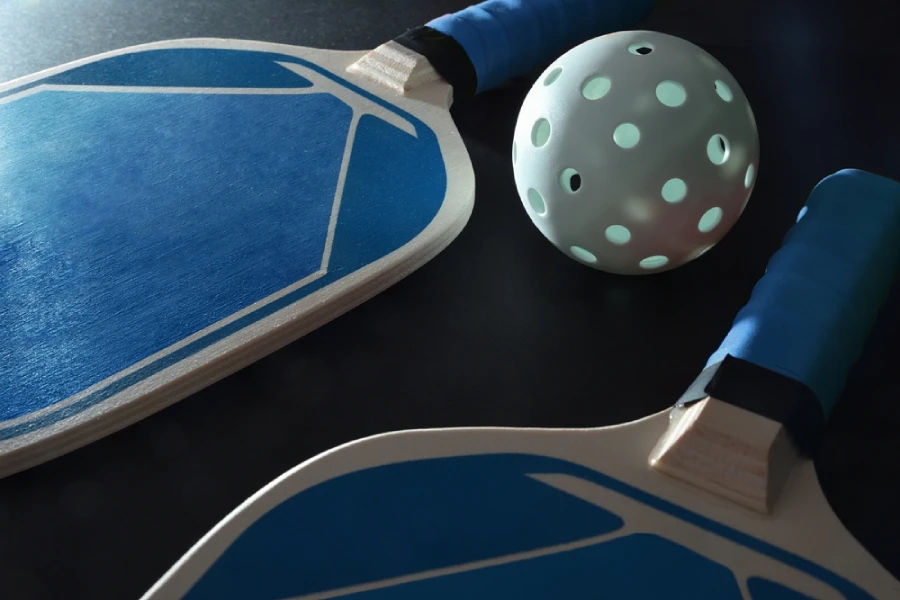
2. Frequency of Use
2.1 Daily Play: High Wear and Tear
A paddle daily-use may require replacement every 6 months to 1 year, depending on its quality. Daily play means the paddle is subjected to continuous stress. This causes faster degradation of core and face materials. Because of frequent handling, the grip also ages fast.
Daily use causes tears and damage to paddles. The ball’s constant impact, frequent scrapes against the surface, and exposure to various weather conditions all contribute to deterioration. This could lead to faster material wear away and worse performance.
2.2 Weekly Play: Moderate Wear
Moderate usage can extend the lifespan of the paddle to around 1 to 2 years, depending on the session intensity and paddle quality. Using a paddle a few times each week leads to moderate wear.
With weekly play, the paddles get sufficient downtime between sessions. As a result, it reduces the cumulative stress on the paddle’s core, face, and grip. They face less frequent stress compared to daily use, allowing the materials to maintain their integrity for a longer period.
2.3 Occasional Play: Minimal Wear
An occasional paddle can last 2 to 3 years, or even longer if stored and maintained right away. Paddles that are used only occasionally (a few times each month) will suffer the least wear and tear.
As a result, the paddle keeps its structural integrity longer. The materials have plenty of time to recuperate between sessions, reducing wear on the paddle’s core, face, and grips. They receive less handling and are not subjected to as many impacts, so it is more durable.
3. Playing Style
3.1 Aggressive Players
The lifespan paddle of aggressive players is often from 6 months to 1 year, depending on the quality of the paddle. They often emphasize strong shots, smashes, and fast-paced rallies. The paddle must work very hard in this type of play. As it involves frequent high-impact hits and rapid movements.
The constant hard-hitting and forceful swings exert significant stress on the paddle’s materials. So, they cause the core and face to wear out more quickly. The grip may also deteriorate faster as a result of the hard handling. Thus, aggressive players may require more frequent replacements for their paddles.
3.2 Defensive Players
These paddles can last 2 to 3 years or more due to the gentler playstyle of defensive players. They focus on control, placement, and consistency rather than power. They play with lengthier rallies, softer shots, and an emphasis on accuracy.
Because defensive players utilize more controlled and softer shots, the paddle experiences fewer hits and stress. This minimizes wear and tear on the paddle’s core, face, and grip. As a result, the paddles tend to last longer.
3.3 All-Around Players
All-around players’ paddles endure 1 to 2 years, depending on the paddle’s quality and maintenance. They use a combination of aggressive and defensive approaches in their games. They strike a mix between forceful shots and precise placements, switching up their style as necessary.
The paddle experiences a range of impacts and stress levels because of the balanced style of play. While not as extreme as purely aggressive play, the paddle still endures a mix of high and low-impact shots. This mixed usage results in moderate wear and tear on the paddle’s components, so they have medium durability.
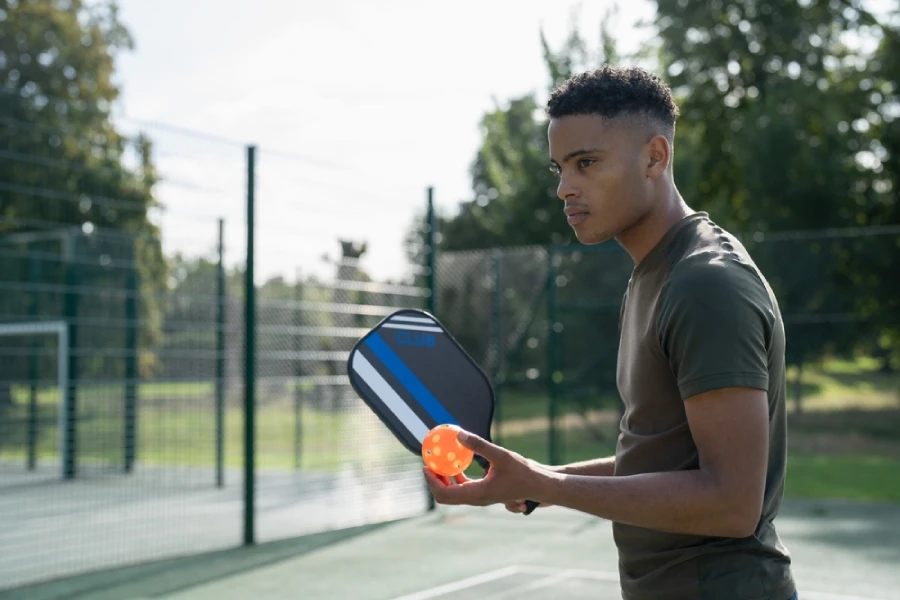
When to Replace Your Pickleball Paddle?
Regularly assessing your paddle for signs of performance degradation, physical wear, and handle or grip issues is essential for maintaining optimal gameplay.
Performance degradation
A pickleball paddle’s original performance attributes could decrease with time. This degradation can be subtle and gradual, affecting your game without you right away realizing it.
If you notice that your stroke has less power than before, the core material may have weakened or deteriorated, limiting the paddle’s ability to produce force. Once you find it difficult to control your shots or the spin decreases, it is conceivable that the surface of your paddle has grown worn and smoother so control is no longer as effective. At that point, you should get a new paddle.
Parts of the paddle worn out
The easiest way to tell when a paddle needs to be replaced is if you see chips, cracks, or scratches on its surface. They can expand over time, compromising the structural integrity and performance.
Another physical wear problem to consider is edge guard damage. The edge guard is supposed to safeguard the paddle. But if it’s broken, chipped, or entirely damaged, it compromises the paddle’s quality. At this time, you should replace the tape now, or think about getting a new paddle entirely.
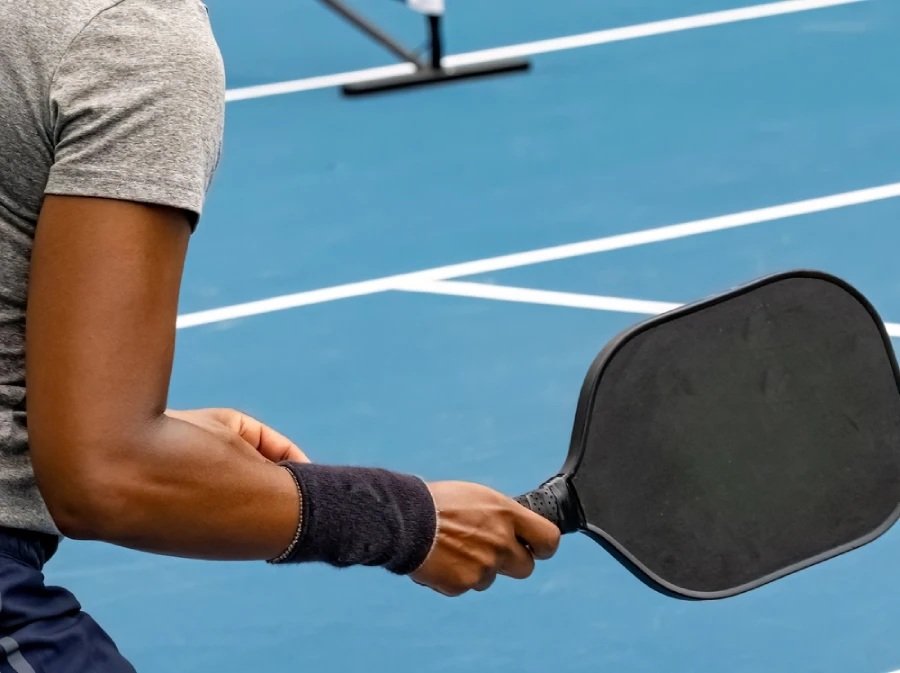
Handle and grip issues appear
If a handle is loose or unsteady, there is likely structural damage. It could hurt you if the paddle slips out of your hand while you’re playing. In addition, the handle’s grip may deteriorate with time, becoming slick and smooth, making it challenging to keep a stronghold.
If you feel discomfort or tension in your hand, wrist, or arm after playing, it could be the result of vibrations from a damaged paddle or an uncomfortable grip.
When you notice multiple instances of these indicators, it’s probably time to think about getting a new pickleball paddle. Keep in mind, that a good paddle is an investment in your enjoyment of the game. Don’t wait until your worn-out equipment starts hindering your performance or causing discomfort.
Maintenance Tips by Pro
As a pickleball player with a 4.0 skill rating with lots of paddles, I’ll offer some advice on how to keep your paddle in great form.
- First, Keep it clean. Does the paddle go straight into your pocket after every match? You shouldn’t do it. Wipe your paddle down with a moist towel to remove sweat, dirt, and mystery liquid that has accumulated during play.
Read this: How to deep cleaning pickleball paddle?
- Second, Temperature or humidity problems. Your paddle will be harmed by heat and humidity. Do not leave it frying in the car on a hot day or freezing in the trunk in the winter. Find a dry and cool place instead. You should think about investing in a specialized paddle case.
- Third, Don’t use all your force. While it’s impressive to see such strong strokes, avoid hitting your paddle with all your power. You should focus on controlled power and finesse.
- Fourth, Regularly examine for damage. Make sure you regularly inspect your paddle for wear indicators including chips, cracks, and loose components. Deal with any problems as soon as possible to stop more harm.
- Fifth, Grip maintenance. A tired grip is a surefire way to miss shots and possibly get hurt. Replace your grip tape regularly to maintain a comfortable and stable hold. This lessens strain on the paddle and enhances control.
- Sixth, Apply edge guards. Invest in paddles with sturdy edge guards or edge tape to defend against impacts and abrasions while playing.
Pro Tip: Alternate between paddles. – If you own more than one paddle, rotate their usage to distribute wear evenly across all paddles. Because of this, every paddle gets an opportunity to rest and is not put under excessive strain.
Final Though
The endurance of a paddle depends on what your definition of “durability” means. Some people will replace a paddle right away if it lacks roughness or has a few minor scratches. Others will only replace a new paddle if it is severely damaged.
I own several paddles, and I found that most paddles with aluminum cores are quite lasting. But it’s a little pricey. Try selecting a paddle with an aluminum core, like mine, if you don’t want to switch them out too often. Don’t forget to evaluate whether the paddle’s weight is appropriate for you.
To conclude, the key to long-lasting pickleball paddles is to strike a balance of durability and performance. Get a paddle that fits your playing style and invest in good maintenance. With these factors in mind, you can pick a paddle that will be a reliable partner on the court.

